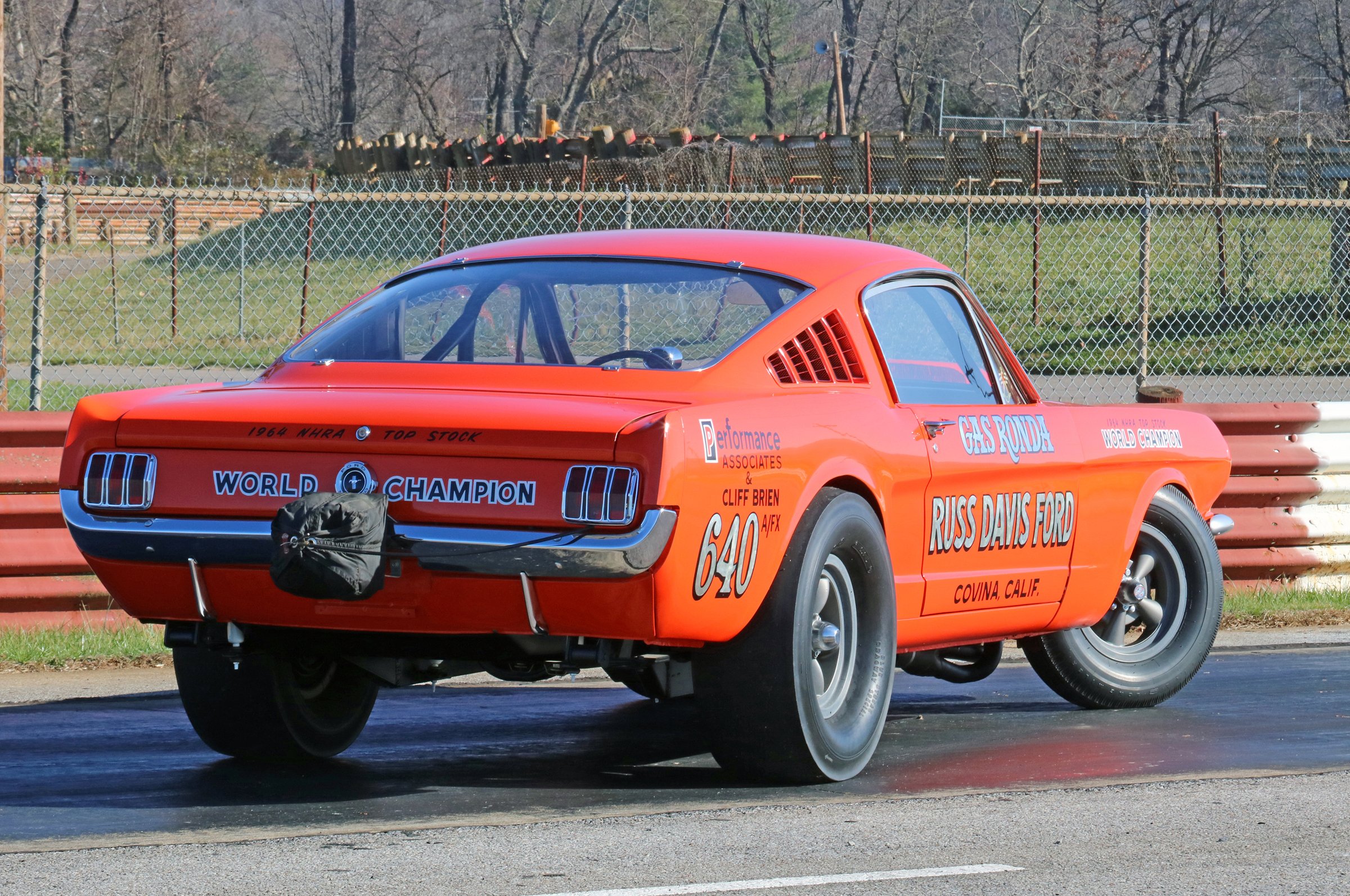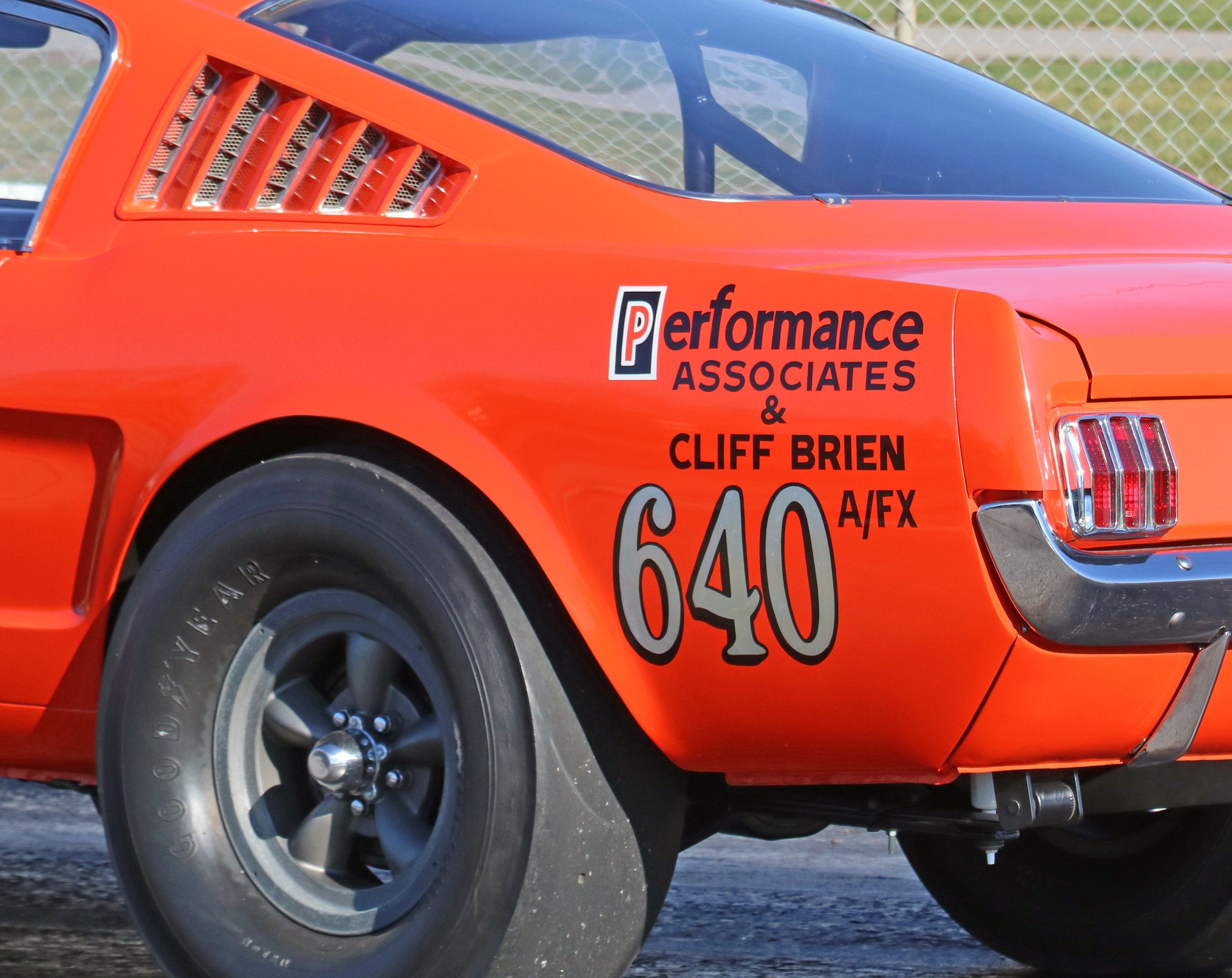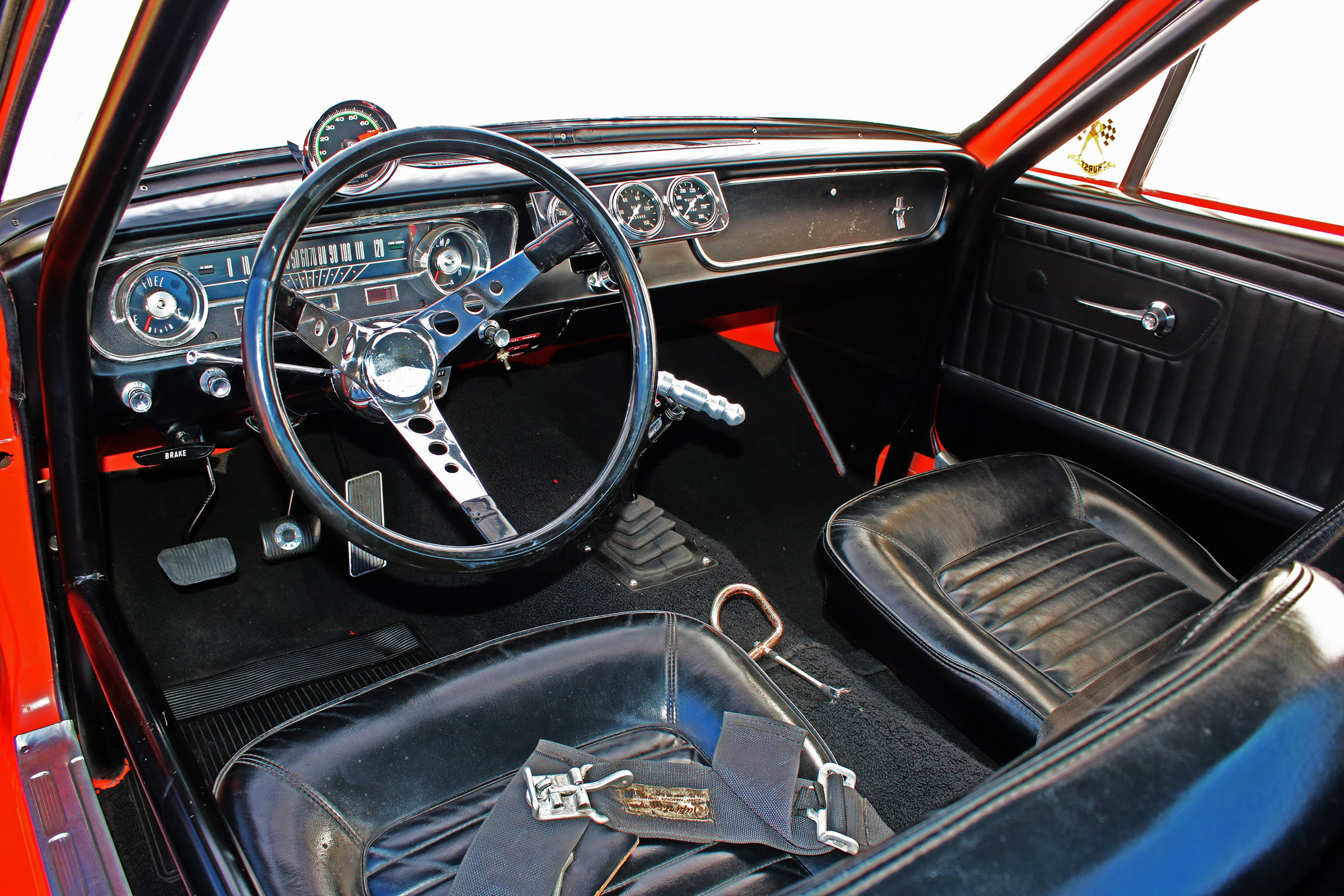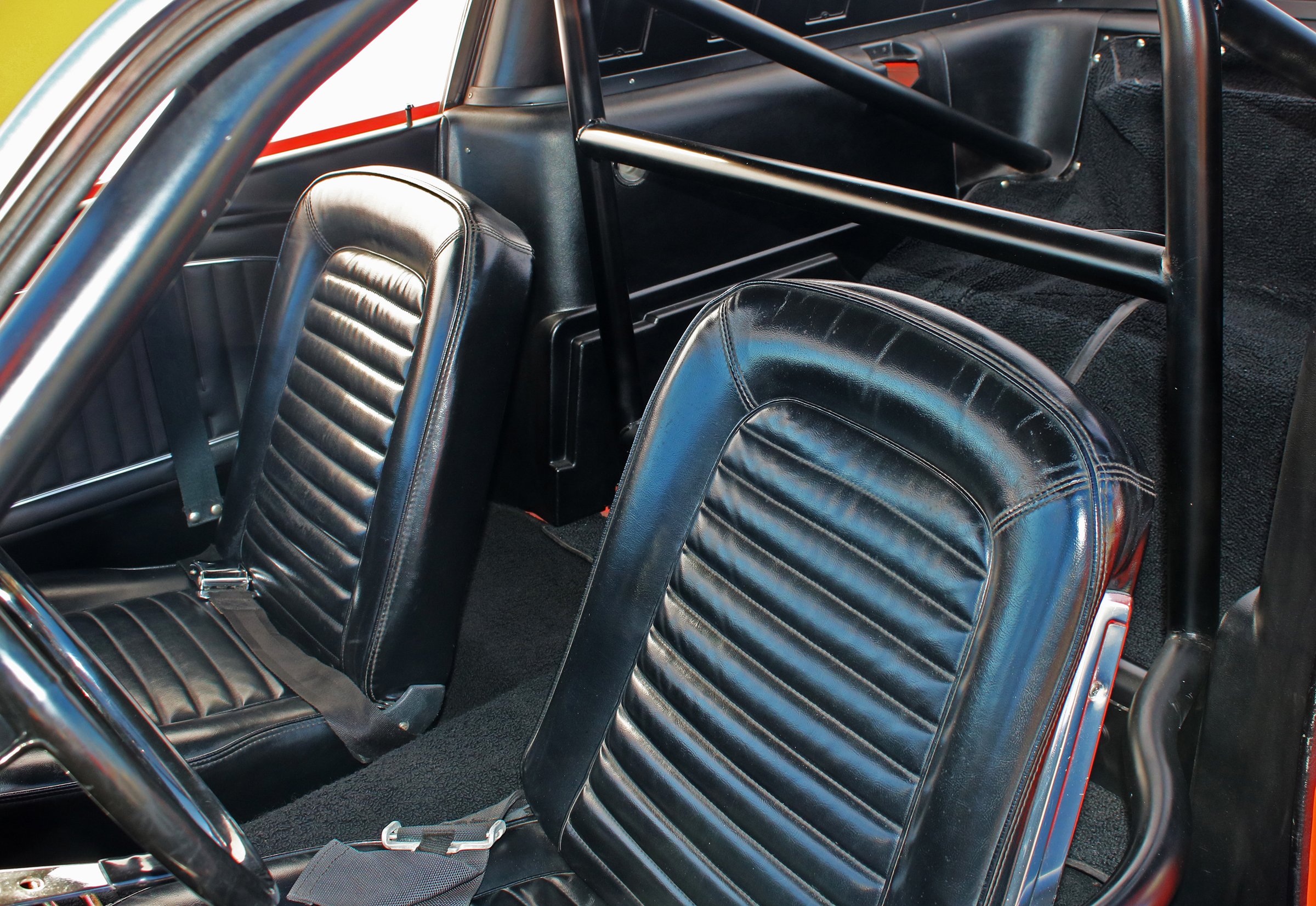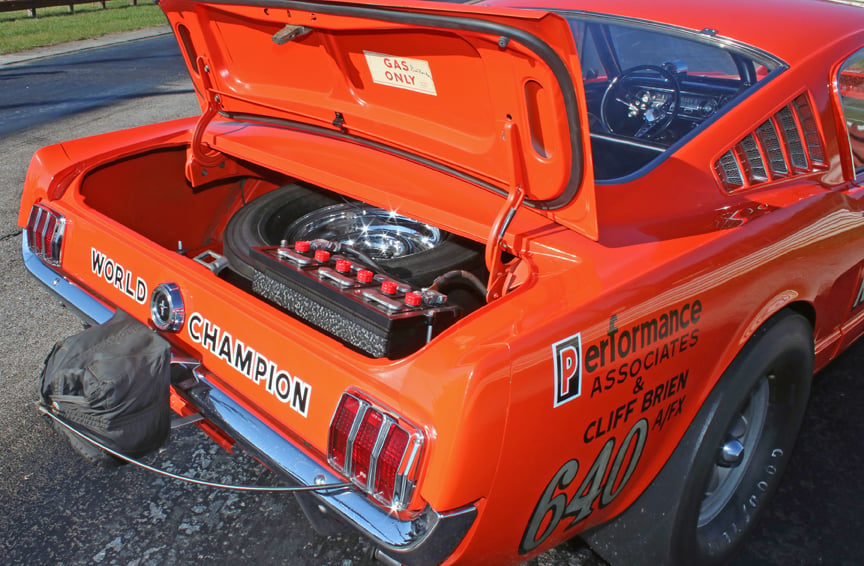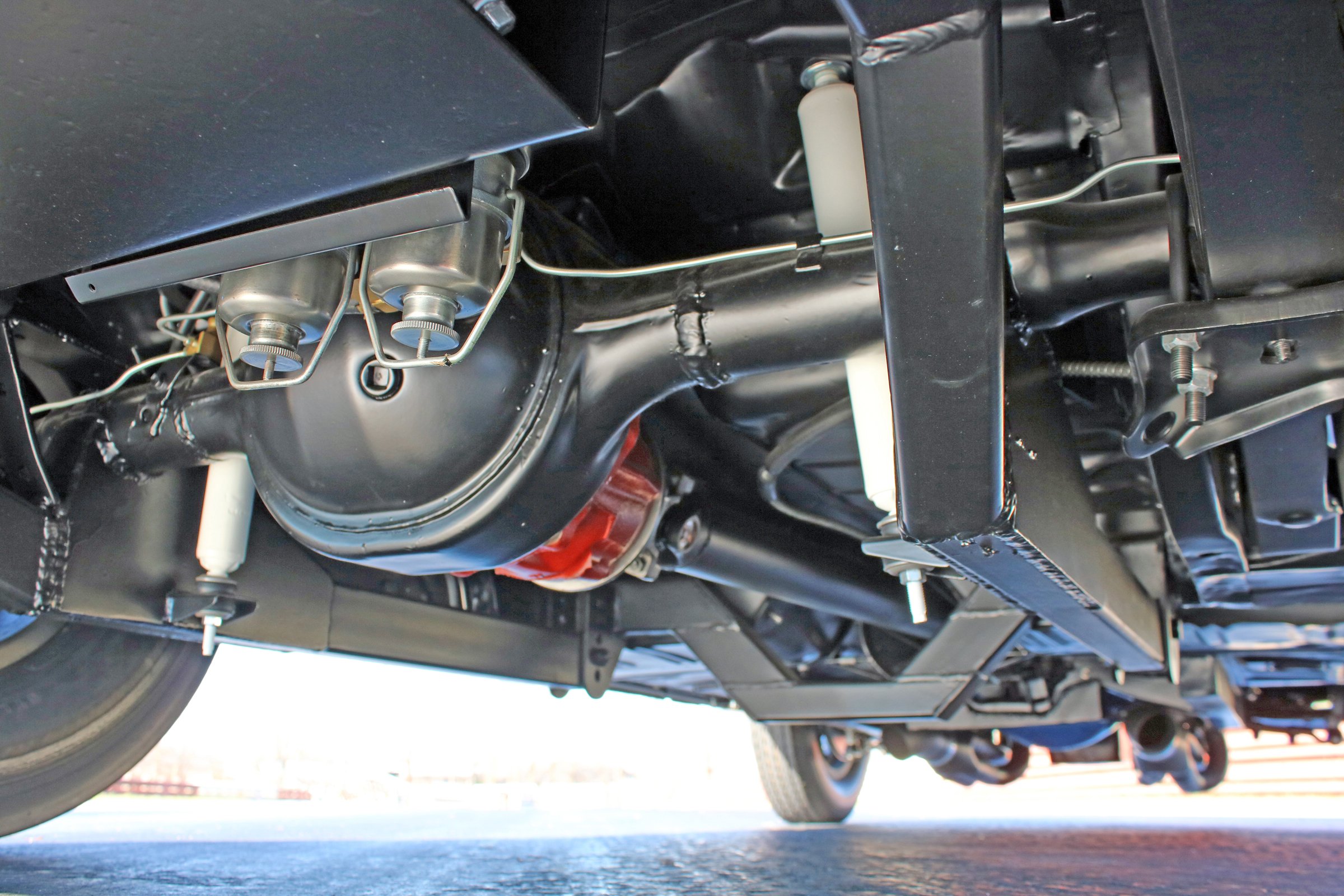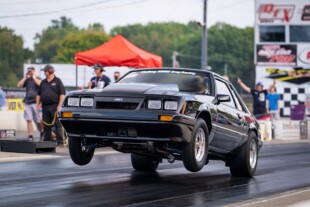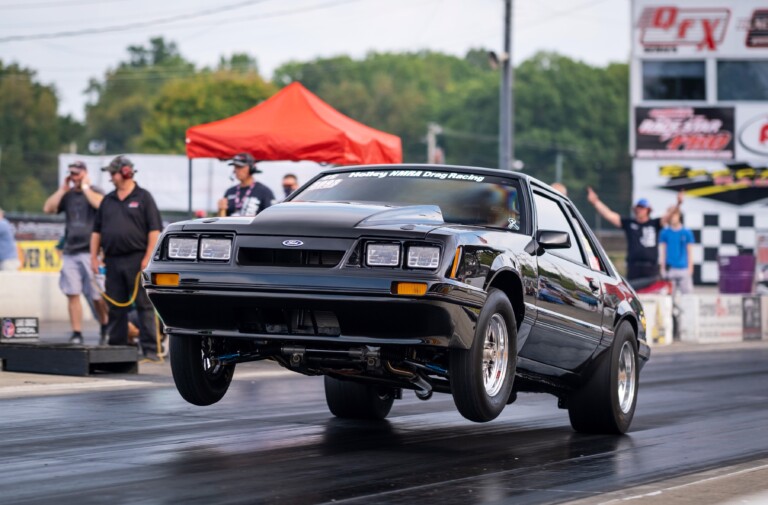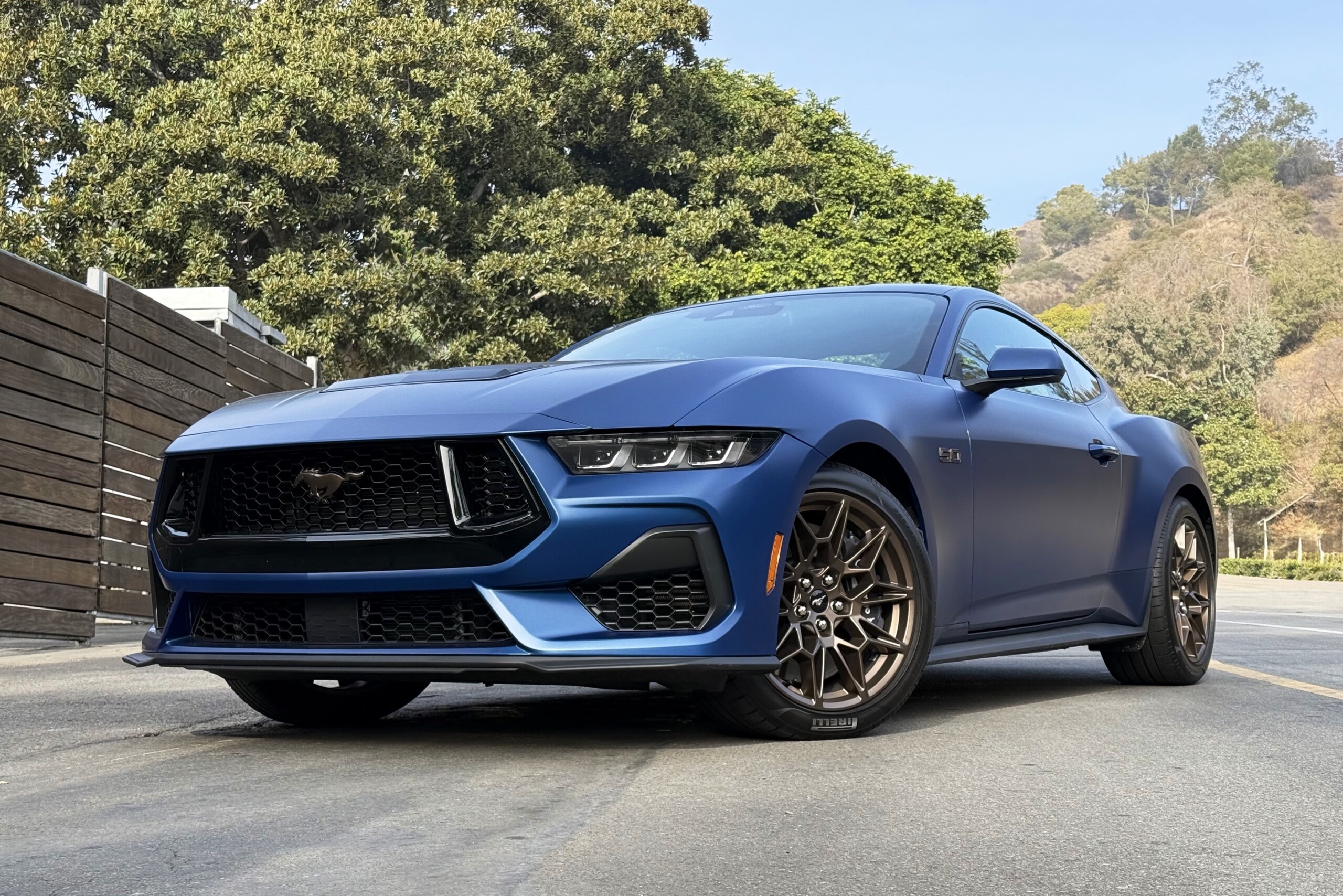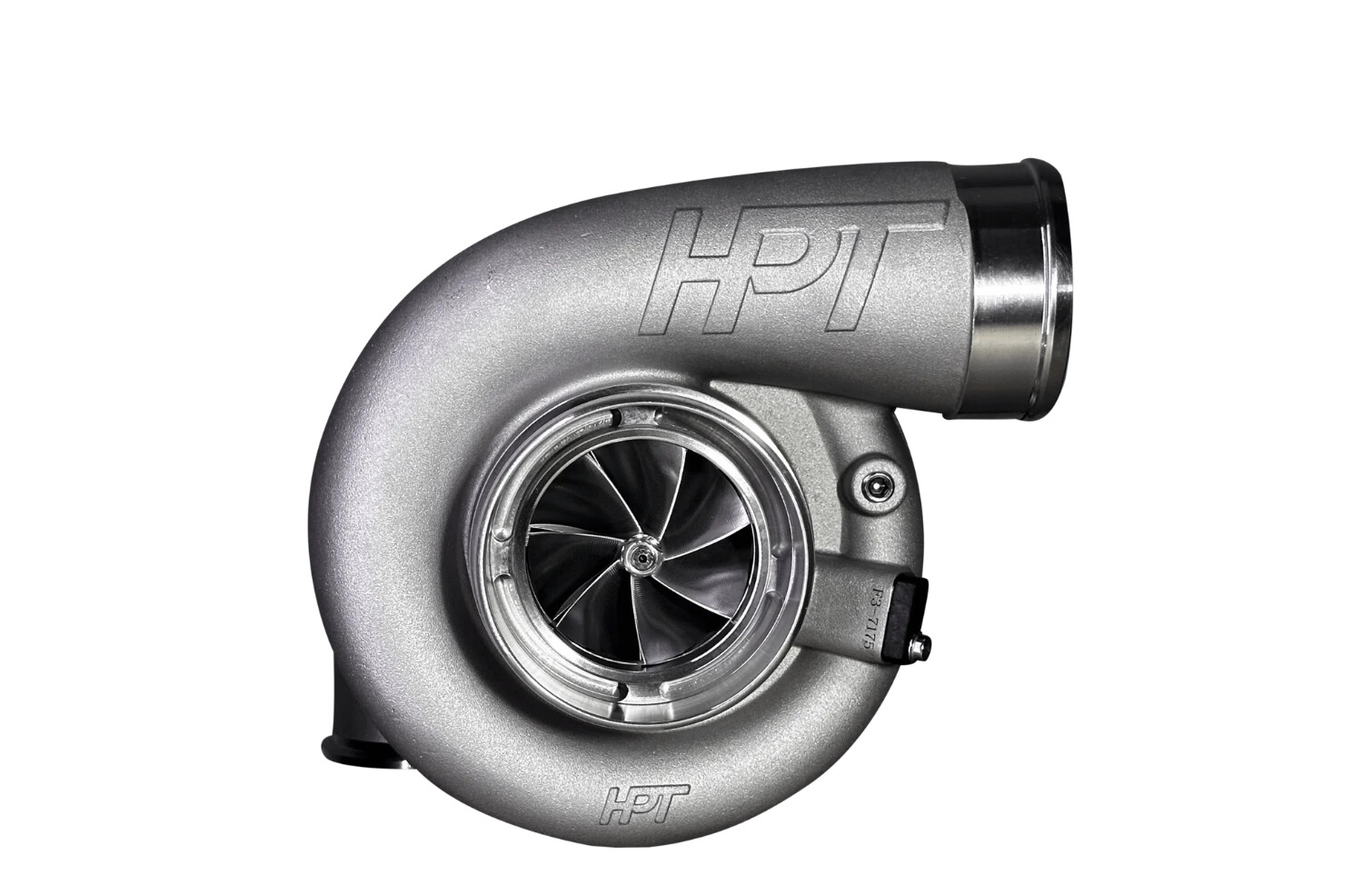At first glance, it may not look all that different from any other run-of-the-mill first generation Mustang. On closer examination, however, the teardrop hood provides the hint that something special lurks underneath. A look inside reveals an assortment of gauges around the stock dash as well as a simple rollcage. By the time you get to the rear of the car, a parachute along with the words “World Champion” shows this poppy red car is a lot more than just ordinary.
In fact, it’s Gaspar “Gas” Ronda’s original Ford A/Factory Experimental.
After its introduction at the World’s Fair in April 1964, Ford’s Mustang was enjoying phenomenal success, but it wasn’t widely considered as a muscle car, however, until the fastback 2+2 with the K-code 289 small-block was introduced in August of that year. Building upon that image looked to be the best way to develop more momentum to sell some new cars — and drag racing appeared to be the perfect opportunity.

Drag racers came out with their own fiberglass versions of the Mustang with the fiberglass body set upon an altered chassis. Ford decided that “Funny Cars” like this wouldn’t sell new cars off the showroom floor, so they authorized the building of several stock-appearing NHRA-legal Mustangs which came off the production line.
Ford Answers Growing Popularity of Stockers
Stockers were popular among up-and-coming young car buyers at the time. Ford had been active in the NHRA Stock and Top Stock categories, but saw Factory Experimental as its best opportunity to increase visibility for the Mustang. In the latter class, entries were limited to current production year vehicles. Optional engines from the car’s manufacturer were limited to no more than 427.2 cubic inches. Blowers were not allowed and gasoline was the only legal fuel. Three different classes were available at that time ranging from A/FX to C/FX based upon vehicle weight and engine displacement.
Ronda’s Mustang was tuned in 1965 by best friend and factory teammate Les Ritchey of Performance Associates in West Covina, California. In an accident that showed the danger associated with these machines, Ritchey was ejected and decapitated from a nearly identical Mustang the following year.
It seemed like the perfect place to invest some corporate funding to further boost the Mustang’s sales off the showroom floor.
Utilizing lessons learned from an earlier test mule, 11 fastbacks were pulled from production and built specifically for NHRA’s A/Factory Experimental, which resulted in a total production of just 12 cars. Dearborn Steel Tubing did the initial engine and transmission swap, after which they were shipped to the famed Holman-Moody shop in Charlotte, North Carolina for completion.
Even with the addition of a tachometer and gauges, the interior looked amazingly stock with minimal safety equipment.
Ford had been very successful with the 427-wedge engine in 1964, but knew that more would be needed to counter the Dodge and Plymouth Hemi cars. Utilizing Indy car technology, Ford engineers worked feverishly to develop a new engine combination that used as many existing off-the-shelf parts as possible. Amazingly, it was produced in just 90 days in order to be ready for the season-opening 1965 Winternationals.
The result was the 427 SOHC engine, which utilized a hemispherical overhead cam. With 2.25-inch intake and 1.90-inch exhaust valves, spherical 12:1 pistons and D-shaped exhaust ports, the new engine was said to produce 700+ horsepower with Holley dual quad 780cfm carburetors.
Just five 427 SOHC engines were available when the cars were being assembled. The remaining Mustangs were built with 427 wedge head engines. Since he was the defending NHRA champion, Gas Ronda got one of the Cammer engines in his car.

Shoehorning a massive engine like the 427 SOHC Cammer into the engine compartment took a lot of fabrication, which included cutting up the firewall and relocating the shock towers.
Yet, the engine people weren’t the only ones pushing to get ready in time for the NHRA season opener. Holman-Moody pushed hard to complete the 11 cars it received in just 30 days. Ten cars were slated for competition, while the eleventh car was a show car.
Ronda’s A/FX Success
The haste in getting Gas Ronda’s car ready and transported across country to the NHRA Winternationals showed early on. In qualifying, Ronda had to abort a run due to a wiring problem. After repairs, he came back in the next round to record an 11.35 e.t. at 127.47 mph. Ronda improved to an 11.06 in a first-round win over Al Eckstrand’s Hemi Plymouth. With experience, Ronda’s Mustang ran an even better 10.92 in the quarterfinals, only to be edged by fellow Mustang racer Len Richter’s slightly better 10.91.
Ronda would later miss the Springnationals after surviving a severe accident when a rear axle broke, which would lead Ford to park all of the A/FX Mustangs until new, stronger axle shafts could be installed. With his first car a total loss, Ronda would inherit the Mustang show car, which is pictured here. It was no slouch, however, as he ran a 10.63 with this car in the A/FX final round at the U.S. Nationals in Indianapolis.

Gas Ronda began 1965 as the defending World Champion as proudly proclaimed on the car’s rear, and ended the year with both ends of the NHRA A/FX national record with a 10.43 second elapsed time at 134.73 mph at 3,200 pounds.
Ronda would also go on to win Stock Eliminator honors with a 10.51 at the AHRA championships with this second Mustang. While Dyno Don Nicholson held the class record for much of 1965, Ronda would come back to win a divisional event to end the year, finishing the season with both ends of the national record with a 10.43 at 134.73 mph.
Despite a successful year with this 1965 A/FX Mustang, Ford was losing ground in the public’s eye to the altered wheelbase, injected Dodges and Plymouths. Despite having an aerodynamic advantage by virtue of being a smaller car, the original A/FX Mustangs were handicapped against the Mopars because they were built to the NHRA’s rules with stock wheelbases, carbs, and gasoline. The Dodges and Plymouths, on the other hand, were built to take full advantage of the AHRA’s looser regulations.

Located in the foothills that surround Los Angeles, Gas Ronda sold cars at Russ Davis Ford in Covina, CA during the week while racing on the weekends. The arrangement was successful, as Russ Davis Ford sponsored Ronda for his entire career while driving a Ford.
With quicker times and faster speeds, Dodge and Plymouth became all the rage on the lucrative match race circuit, where most of America got to see drag racing. NHRA only ran four national events then. Ford didn’t want the publicity of a Mustang built for NHRA losing to a Mopar on an uneven playing field, so the factory cars were banned from going head-to-head against Dodge and Plymouth.

Gas Ronda won the Mr. Super Stock Eliminator title at the Long Beach AHRA Championships and was the A/FX class runner-up to teammate Les Ritchey with this car in 1965. Media reports from that time report that Ronda ran a best-ever 10.16 at 138 mph with this car.
Thus, the 11 Mustangs built for A/FX in 1965 were quickly outdated. Ford countered quickly, however. Ronda was given a 1966 long-nose Mustang that reportedly weighed just 1,700 pounds, which was 1,000 pounds lighter than his original A/FX ’65-model car. The results were immediate, as Ronda’s new Mustang was at once competitive against all comers.
Despite rarely traveling east to race and not making every event, Ronda’s performance behind the wheel of a series of Russ Davis Ford-sponsored Mustangs made him a crowd favorite. In 1967, he was named AHRA’s Top Driver of the Year and would eventually run a 7.26 at 200+ mph in a flip-top Funny Car.
Tragically, his career would end when a fire on the top end of a track in 1970 left him with serious burns over 30% of his body. During recovery, Ronda made plans to get into a Pro Stock Maverick, but eventually decided to hang up his driving gloves for good.
Less than half of those original Mustang A/FX cars still remain today, but they are still revered as shown by the $324,500 price this restored car fetched at a Mecum Auctions event in 2018. Sadly, Gas Ronda passed away just a few months prior to this sale at the age of 91.
Despite his short career, Gas Ronda’s legacy has endured as well as the reputation of the Ford Mustangs that he drove.

With the front wheels relocated 14 inches forward and the rear axle moved up 10 inches, Ford forsook the stock look to give Gas Ronda a lightweight long-nose Mustang which was built by Holman & Moody. The injected SOHC powered car ran as quick as 8.75 at 161.57 mph.




